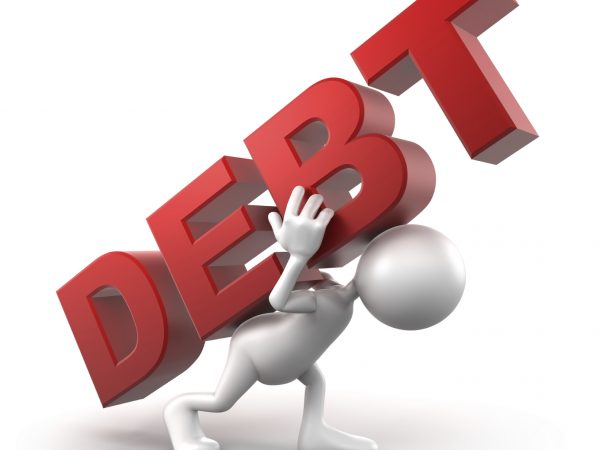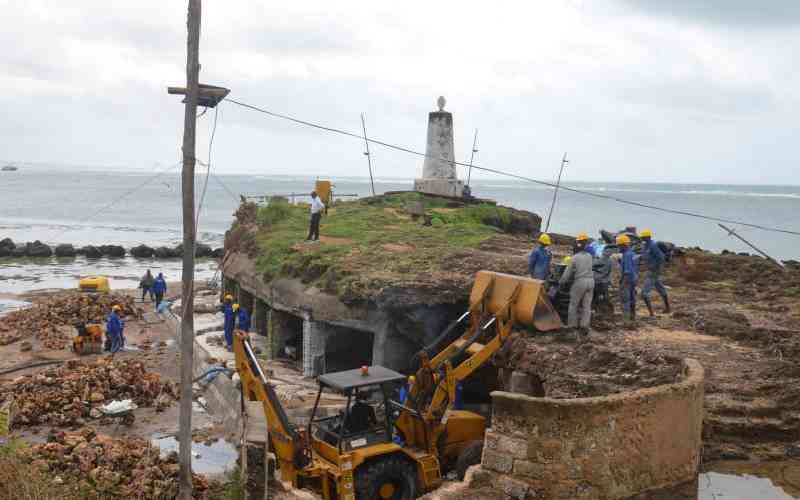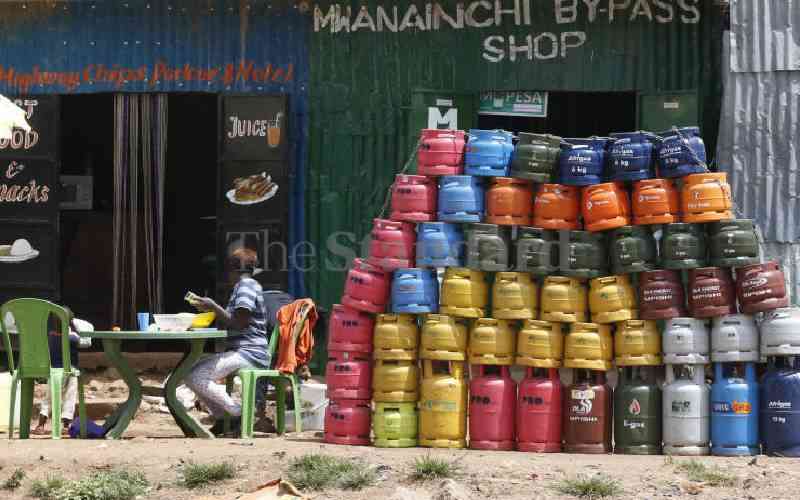
Kenya’s stock of public and publicly guaranteed loans might hit a mind-boggling Sh7 trillion by June next year. But that is beside the point.
Seven trillion shillings is just but a big number. It really doesn't say much. Perhaps, it is the small numbers that should speak the most: Like, when are Kenyans repaying most of these loans, in a year or in 30 years?
What is the average interest rate of these loans, 1 per cent or 10 per cent? How long, on average, will these debts mature- five years? 10 years? 20 years?
The issue, economists say, is not the debt itself, but the cost of the debt: It is whether or not this debt is working for Kenyans, or against them.
For Kenyans who care so much about posterity, it is whether the pain they endure today as a result of the debt will translate into some gain in the future for their children and children's children.
Critics worry that rather than innocuously shepherding Kenyans to the land of milk and honey, the debt train is eerily hurtling with them towards impoverishment.
So much that, in their worst-case scenario, Kenyans might find themselves in hell where prices of goods and services double or triple or quadruple overnight: A scary place from where foreign investors convert all their investments into cash and scamper towards some higher grounds leaving behind them a trail of financial ruin.
With the foreign currencies fleeing with foreigners, the Shilling would be left on a free-fall. A weak local currency would, in turn, push up the cost of living as Kenya, a net importer, spends quite a fortune to buy commodities, from those critical as drugs to quaint ones as toothpicks.
There would be little cash left within the Exchequer to procure textbooks for children, provide cheap fertiliser to farmers or pay teachers' salaries.
Fortunately, Kenya is far from this dystopia. But there are reasons to worry.
In the 2011/12 financial year, for every Sh2 incurred in debt, the economy would produce an extra Sh3. However, eight years later, Sh3 of debt only results in the production of goods and services worth Sh2. Debt is becoming less and less sustainable.
A new World Bank report says that although the quality of Kenya’s debt-financed infrastructure has improved to rank higher than its peers, there is little to show for in terms as far as these investments on economic growth is concerned.
Slightly over half, or Sh3 trillion, of Kenya’s total debt as at June was external. Most of it, three quarters, was in US Dollars. However, exports, the main source of foreign exchange reserves have largely been stagnant.
Debt repayments in Dollars are coming in thick and fast. Eight years ago, in 2011/12, for every Sh1,000 ($12) received in export earnings, President Mwai Kibaki’s government used only Sh18 ($0.2) to pay interest on foreign debt.
This has changed. In the financial year ending June 2018, for every Sh1,000 ($10) that the country earned from its exports of tea, coffee, horticulture and others, Sh173 ($1.7) went into paying interest on foreign debts. And this does not even principal payments.
Every extra dollar that President Kenyatta’s government has paid out to foreign creditors in 2019 has meant fewer dollars to buy critical resources such as drugs, petrol, fertilizer, or foodstuff.
True, Kenya is not bankrupt like Zimbabwe, Sudan, or Mozambique, which have been classified by the International Monetary Fund (IMF) and the World Bank as debt distressed.
Moreover, credit rating agencies have rated Kenya’s debt as “highly speculative,” which gives it a chance with investors.
"Kenya continues to meet its debt service obligations promptly with no accumulation of debt arrears,” suspended National Treasury Cabinet Secretary Henry Rotich, told Parliament in his Budget Statement for financial year 2019/20.
Neither is Kenya at high risk of defaulting like Ethiopia, Ghana, or Zambia. Not just yet.
But there are smoking guns that things might change for the worse, thanks to the ravenous uptake of expensive loans, the country’s risk of defaulting moved from low to moderate.
The first smoking gun is Kenya's addiction to expensive loans. If reports that Kenya has lined up a loan of Sh150 billion from a syndicate of international banks are true then the country is far from weaning itself off the obese-causing commercial debt.
National Treasury has been telling everyone who cares to listen how Kenya is on diet, committed to slashing its intake of debt by implementing a raft of policies aimed at increasing taxes and reducing expenditure, also known as fiscal consolidation.
Unfortunately, in the financial year ending June, the government relapsed on its austerity plans borrowing an extra Sh114 billion.
During this period, Treasury borrowed Sh770 billion, or 7.4 per cent of GDP, as opposed to a self-imposed target of Sh635 billion or 6.3 per cent of GDP. Part of the reason Kenya might have overshot its borrowing ceiling was the absence of an IMF arrangement, whose harsh conditions have acted as the big stick feared by most developing countries.
Most of the borrowed cash was used to fund the President's Big Four Agenda of providing universal access to critical healthcare by all Kenyans, creating jobs by revamping manufacturing, ensuring universal access to nutritious food to everyone and building at least half a million cheap houses.
"If something is important you can go even to an expensive source,” says Gerrishon Ikiara, an Economics lecturer who notes that that Paris Club, a group of developed countries that have readily given cheap loans, have been uptight.
Moreover, ever since Kenya rebased its economy to become a low-middle income country, the flow of cheap loans has been in spits.
Billions have been poured into railways, roads and ports as President Kenyatta embarks on opening up the country; more substations have been built, transmission lines strung from the electric grid to houses in remote parts of the country. The net effect has been an increase in the share of commercials loans.
Compared to concessional loans that were popular with former President Mwai Kibaki's administration, commercial loans are expensive.
More than a third of Kenya’s external loans are non-concessional, having tripled from a share of 10 per cent in 2008. The interest rate has also increased from less than 1 per cent to an average of two.
External loans denominated in US dollars or Euros and are priced at six-month London Interbank Offered Rate (LIBOR), currently at a low of 2.1 per cent, plus a margin, which can be as high as eight per cent bringing the cost of the loan to around 10 per cent.
They have a shorter grace period; meaning before you have even figured out how you will make use of the money, the repayment clock starts ticking. While you are still trying to come terms with the highest interest payment bill, the principal is due.
For cheap loans, known as concessional loans, which are contracted from multilateral institutions such as the World Bank and the African Development Bank, the loans attract an interest rate of as low as 1.25 per cent. They have a longer grace period of up to 10 years and mature after as long as 30 years.
Moreover, they come in a mix of foreign currencies which helps a country to match its stock of borrowed cash with its composition of foreign exchange reserves. If most of what you sell in the World Market is paid in Euros, for example, then it only makes sense if most of your debt is also in Euros.
In Kenya’s debt sustainability analysis (DSA), the IMF found that an increasing load of foreign interest payment was one of the factors that nudged the country to the edge of debt distress as it risked defaulting on its obligation.
Thus, in 2018, the global lender reclassified Kenya’s risk of default from low to moderate, with Kenya joining 25 nations including Congo Republic, Burkina Faso, Liberia, Sierra Leone and Togo in this category.
"The higher level of debt, together with rising reliance on non-concessional borrowing, have raised fiscal vulnerabilities and increased interest payments on public debt to nearly one-fifth of revenue, placing Kenya in the top quartile among its peers," the IMF said in the report released in December 2018.
Besides the syndicated loans, commercial loans have also included sovereign bonds denominated in dollars, known as Eurobond. To date, the country has borrowed billions by issuing Eurobonds. Most of them have been taken to refinance other dollar-denominated debts as they fall due.
Even locally, investors have warmed up to Government’s short-term papers, those which are redeemed in 91 to 382 days.
That is why Kenya is walking on egg-shells. Any slight shock on its macro-economic landscape- for example massive increase in wages for civil servants, prolonged drought that depresses export earnings of tea, coffee and horticulture or sudden hike in the price of oil prices- is enough to see it join debt-distressed countries like Ghana and Ethiopia, which are having difficulties repaying their debts.
 The Standard Group Plc is a multi-media organization with investments in media
platforms spanning newspaper print operations, television, radio broadcasting,
digital and online services. The Standard Group is recognized as a leading
multi-media house in Kenya with a key influence in matters of national and
international interest.
The Standard Group Plc is a multi-media organization with investments in media
platforms spanning newspaper print operations, television, radio broadcasting,
digital and online services. The Standard Group is recognized as a leading
multi-media house in Kenya with a key influence in matters of national and
international interest.
 The Standard Group Plc is a multi-media organization with investments in media
platforms spanning newspaper print operations, television, radio broadcasting,
digital and online services. The Standard Group is recognized as a leading
multi-media house in Kenya with a key influence in matters of national and
international interest.
The Standard Group Plc is a multi-media organization with investments in media
platforms spanning newspaper print operations, television, radio broadcasting,
digital and online services. The Standard Group is recognized as a leading
multi-media house in Kenya with a key influence in matters of national and
international interest.










